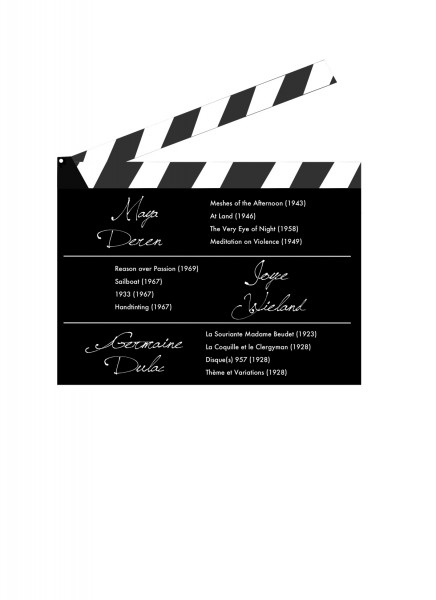Newcomb Art Museum’s film screening highlights legacy of women directors

Anh Nguyen | Associate Artist
On Oct. 18, the Newcomb Art Museum presented a screening of several women-directed films in conjunction with their exhibition “Unfamiliar Again: Contemporary Women Abstractionists.”
Hollywood may be an old boys’ club, but women directors have historically been artistic experimenters and inventors in the film world. The Newcomb Art Museum’s film screening on Oct. 18 at the Freeman Auditorium emphasized that avant-garde cinema has been a space for women to shine, though they may not always have been appreciated.
In conjunction with its exhibition entitled “Unfamiliar Again: Contemporary Women Abstractionists,” the museum screened several short films by five 20th century women directors who have profoundly impacted the medium of film, including Germaine Dulac, Maya Deren, Shirley Clarke, Chantal Akerman and Joyce Wieland.
The screening began with the longest film of the night, Germaine Dulac’s “The Seashell and the Clergyman” (1928). This 40-minute French film marked the beginning of surrealism in filmmaking, despite being eclipsed by “An Andalusian Dog” (1929) directed by Luis Buñuel and Salvador Dalí.
“The Seashell and the Clergyman” is a feminist interpretation of Antonin Artaud’s story, and in simplest terms, cryptically follows a priest’s hallucinations of a general’s wife. Unfortunately, technical difficulties in the auditorium made the already abstract film even more difficult to comprehend fully.
Similarly experimental, Maya Deren’s “Meshes of the Afternoon” (1943) centers on a circular but followable narrative. The silent film was created with an estimated $280 budget and starred Deren and her husband, Alexander Hammid. In a surrealistic film noir style, “Meshes of the Afternoon” includes plenty of symbolic imagery and movements inspired by modern dance.
Shirley Clarke’s films “Bridges-Go-Round” (1958) and “Butterfly” (1967), as well as Joyce Wieland’s “Sailboat” (1967), are even more abstract, connecting deeply with the museum’s current exhibition. These works focus viewer attention on sensory details, like text, color and sound. “Butterfly,” for instance, includes physical film scratches and chemicals used for color change.
Chantal Ackerman’s “Blow Up My Town” (1968) was created when the director was just 18 years-old. The film features Ackerman as a young girl completing household chores in slightly off-kilter ways. While admittedly somewhat nonsensical, “Blow Up My Town” is a charming and whimsical work.
Overall, these short films are conceptually difficult to grasp, particularly for those who are perhaps less well-versed in the world of the avant-garde. Even so, audience members departed knowing the names and works of several women directors who have left a deep mark on the format and artistry of film.
Your donation will support the student journalists of Tulane University. Your contribution will allow us to purchase equipment and cover our annual website hosting costs.
















Leave a Comment